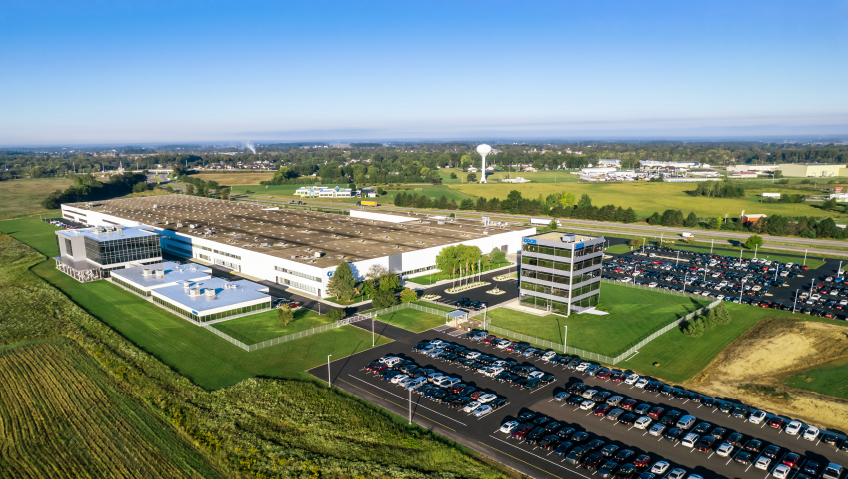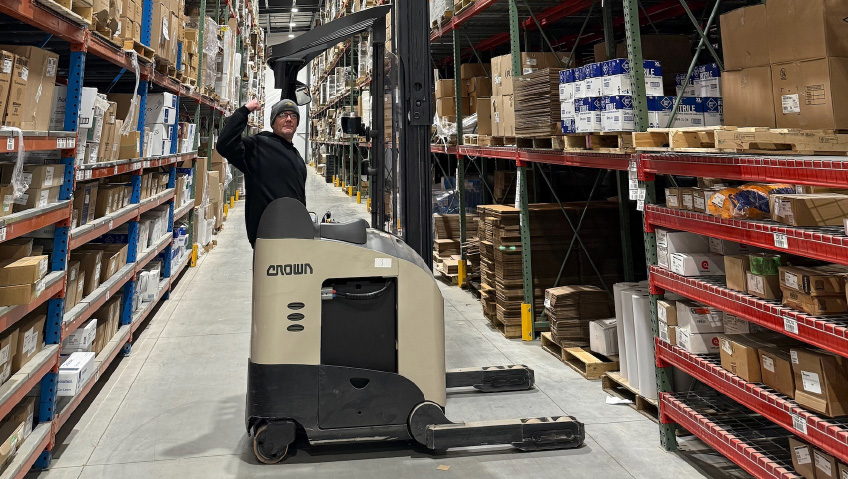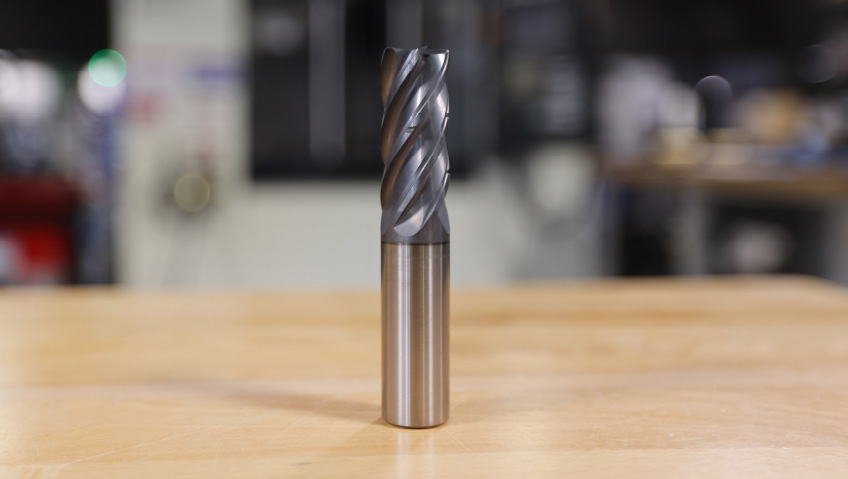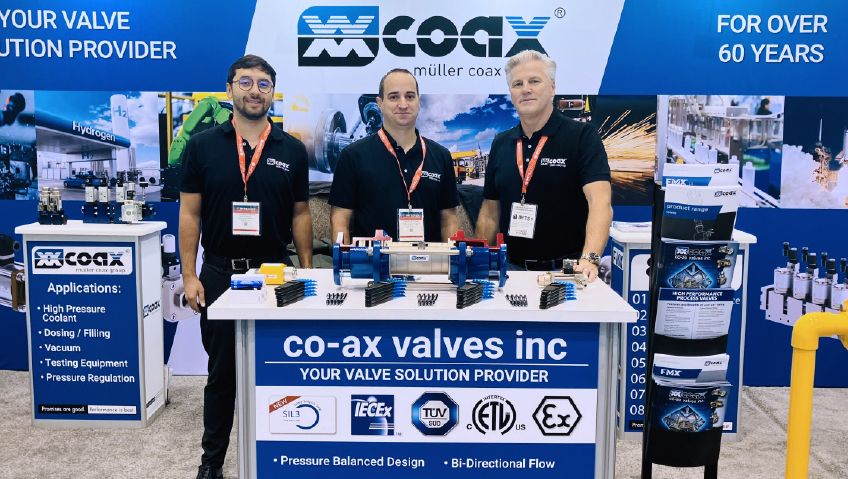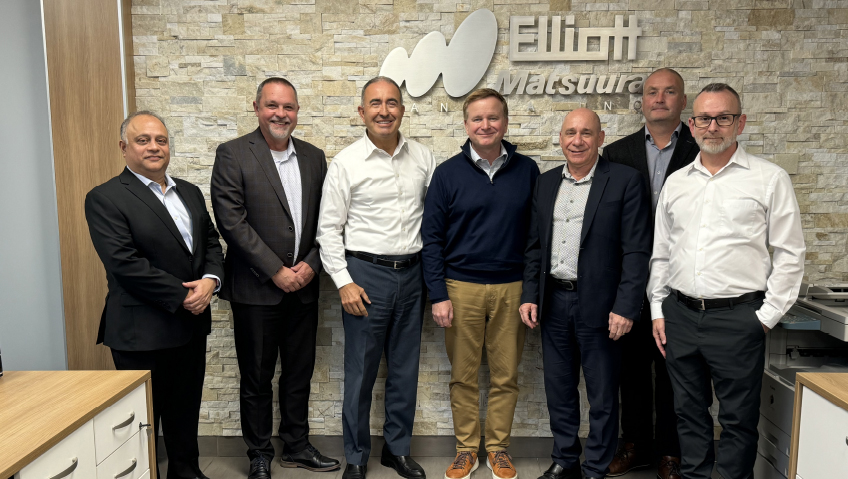Manufacturing equipment provider GROB is experiencing accelerated growth, with new products, new staff, and a new focus.
Founded in 1926 in Munich, Germany by Ernst Grob (whose family still controls the firm), the company is headquartered in Mindelheim, Germany with a North American branch in Bluffton, Ohio and branches in Brazil, China, and Italy. It has earned an enviable reputation for its high-end machining centers, automated pallet systems, and industrial software. Alongside these products, the company recently introduced a revolutionary, liquid metal printer and a pallet storage tower.
While the company still serves the medical, die and mold, aerospace, energy, and military sectors, it has massively grown its presence in the electromobility market, exemplified by electric vehicles (EVs).
“GROB was primarily a machine tool builder throughout our almost 100-year history. That’s what we were known for [plus] some assembly work but, a few years ago, our leadership had enough vision to recognize there was an industry shift from combustion engines,” states Glenn Oshel, Director of Key Accounts for E-mobility at GROB Systems Inc., the firm’s North American operation.
The company “has made a tremendous investment in e-mobility research. We took engineers who only worked on machine tools their whole life and told them, ‘Hey, you’re going to work on a [battery] cell manufacturing system.’ It was a big culture shock for a lot of engineers but, in the end, we made that transition, and over the past four or five years, we’ve gone from basically zero percent e-mobility to fifty percent of our business being e-mobility now,” he continues.
This transition has also entailed a massive rethink of the services and solutions required by automotive manufacturers. “Everybody is worried about the displacement of machining centers for cylinder heads or engine blocks or transmission cases. We’re seeing a lot of that get replaced now with machining for battery trays. The message I want to share: ‘Don’t think that because there’s not a [gas] engine, all the machining opportunities are gone. They’re not. They’re just machining different things now. They’re [machining] much more structural, larger components,’” says Oshel.
Going forward, GROB is looking to offer “larger machines for frames. As e-mobility continues to expand, the types of vehicle frames are changing from primarily stamped types of material to giga-casting and mega-casting; the parts are getting huge. For example, look at a pickup truck. From wheel to wheel, you have a battery tray,” says Derek Schroeder, Universal Machine Sales Manager for GROB Systems Inc. Popularized by EV maker Tesla, giga-casting and mega-casting are methods of making vehicles with a small number of large-size parts using mammoth casting machines.
Given the rate at which it is adding personnel, GROB’s transition to e-mobility solutions has clearly been a success: since Manufacturing in Focus profiled the company in May 2021, it has hired 360 employees at its North American division. Total employment in Bluffton now stands at 850 people. The parent firm also recently hired hundreds of new staff members in Germany.
Among other tasks, the company designs and builds equipment and systems for making stators and rotors, as well as battery cells and modules and packs for the e-mobility market. GROB is investigating e-mobility opportunities in aerospace and keeping an eye on future technologies such as hydrogen fuel cells.
Last September, the company announced a partnership with German firms Manz, which specializes in high-tech mechanical engineering, and Durr, which specializes in plant and mechanical engineering. Working together, these three companies want to supply facilities to produce lithium-ion batteries for EVs.
The goal is to “be able to supply a complete turnkey solution from raw material to finished cell system. I think we’re the only one-stop shop for cell manufacturing,” says Oshel.
GROB has also positioned itself at the forefront of another burgeoning trend with the introduction of the GMP300 liquid metal printer. While additive manufacturing is not a new technology, plastics are the most common material used in the additive sector. GROB GMP300 uses a new technology to print aluminum components without the use of powder and without a laser. “Liquid metal printing represents a completely new technology with fast build rates, no health hazards, and a lean overall process. The parts can be removed and used directly after printing; no mechanical separation or heat treatment is necessary,” notes Stephan Kowalski, who works at the Center of Excellence Medical for GROB in Europe.
Unlike other additive manufacturing systems, the GMP300 is not only designed for one-off production, but can also produce small batches economically. Oshel suggests that the printer can be used to produce replacement parts, jigs and fixtures, and prototypes. Lightweight structures can even be realized in completely enclosed shapes with this powder-free printing process that produces the components without excess raw material.
For all this innovation, GROB still excels at making traditional equipment for manufacturing. The company’s G150 and G350 universal, five-axis machining centers, for example, are well-suited for machining medical parts. The compact G150 has working travels of 450, 670, and 665 mm in its X, Y, and Z axis, while the larger G350 has working travels of 600, 855, and 750 mm in its X, Y, and Z axis. It also offers four-axis universal machining centers such as the G440, G640, and G840.
Earlier this year, the G150 came in first place in a review of milling machines conducted by Produktion, a European trade publication. Produktion judged nearly sixty milling machines from various companies on criteria such as automation, maintenance, control system, and total cost of ownership.
GROB continues to design and build automated pallet storage and changing systems as well. The firm recently introduced the customizable PSS-T300 tower pallet storage system, which boosts part production throughput and can store 38 square pallets or 81 round pallets. When connected to a GROB G150, G350 or G350a machining center, the PSS-T300 can operate continuously without human assistance.
Manufacturing clients looking to enhance productivity and efficiency might want to check out the company’s suite of GROB-NET4Industry applications. These include GROB4Line, which allows machines to be controlled and monitored via smartphone, and GROB4Analyze, which identifies unproductive phases so that the causes of weaknesses can be quickly identified and corrected. GROB4Interface, which allows the transfer of machine data to other systems, regardless of the manufacturer, and GROB4TDX, which allows the automatic transfer of tool data to a machine, are two other important applications.
GROB’s cutting-edge machines and technology are complemented by an emphasis on quality and customer support. It has maintained its ISO 9001:2015 and ISO 14001:2015 certification and International Traffic in Arms Regulations (ITAR) registration. ITAR registration gives the company entry to American military-related aerospace projects.
Staff from the Bluffton division offer training to clients who purchase GROB solutions in North America. Training can be conducted at the Bluffton facility or the client’s worksite, an example of the customer-friendly approach that has been key to the company’s enduring success.
Hosting open house events is another way GROB demonstrates its client-centered ethos. In late March of this year, staff in Germany showcased new technologies and equipment and had industry experts on hand for a four-day in-house exhibition. The 3,500 visitors who attended had the opportunity to view more than thirty machines.
“You could spend a whole day and find on every corner a new technology and the solution to your problem,” says Kowalski of the German exhibition.
The Bluffton facility, meanwhile, recently held an open house of its own. “Every once in a while, we like to have the general public come in, tour the facility, and see what we do. The employees can bring in people they know and the public can see us. In Northwest Ohio, everyone thinks GROB is a factory; they don’t understand. It’s high technology. It’s not line work. Everybody has a complicated job to do,” says Schroeder.
The open house was a big hit, with more than 3,000 visitors on a Saturday. As a follow-up, the Bluffton facility will host a customer event in August, to “show processes from different industries.”
Like all industries across North America, GROB faces the challenge of attracting new skilled workers. The company has met this challenge in large part through its comprehensive, four-year apprenticeship program. Established over three decades ago, the program consists of a mix of on-the-job training and classroom education.
“We pay for their school, their wages, their instructors. It’s a huge investment for us,” Schroeder states, adding that the expense is worth it in terms of preparing well-trained workers.
The company maintains an optimistic outlook, as evidenced by the fact it is adding another 100,000 square feet to the Bluffton facility, with construction scheduled to begin later this year. “If you look at an overhead view of the plant, it keeps getting longer and longer,” he says.
In the future, GROB aims to continue to balance its presence in traditional markets with new opportunities. “Strategically, we want to keep it 50/50, as best they can, between e-mobility and machining,” states Oshel.
This view is echoed by Schroeder who says, “I think, in the universal machines, we have to continue to gain market share—for example, by expanding in the medical sector. In the e-mobility space, the challenge in the next five years will be to maintain the market share that we have.”

